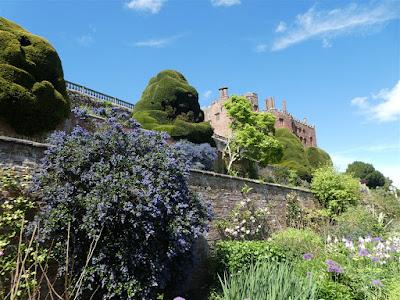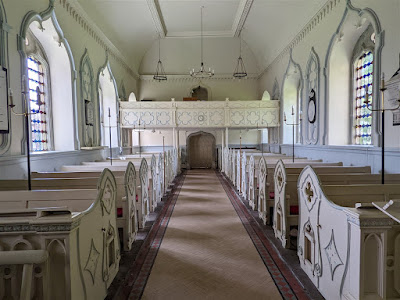Something we read at Kilpeck led us to the hamlet of Shobdon, its parish church, and a set of arches there attributed to the Hereford School. More "B" roads and lanes; but we found it. The church was like nothing we have never seen before, and the arches, it turned out, were somewhat removed.
 |
Interior of the church: Victorian, officially, but we dubbed it
neo-wedding cake revival |
 |
| One redeeming feature |
 |
The original 12th century baptismal font, with
Hereford School carving |
 |
| Neo wedding cake revival, indeed |
 |
So, it turns out, we learned from other visitors, the Arches were
up this beautiful oak-lined avenue |
 |
The original arched entry to the 12th century church; thankfully,
someone thought to rescue it from the refuse pile and erect it here;
if only as a folly |
 |
| Click to enlarge |
 |
| But, sadly, left outside to weather finally away |
 |
| Left, a Judgment |

 |
| All surrounded by huge fields of... |
 |
| Black currants (so we were told) |



























































